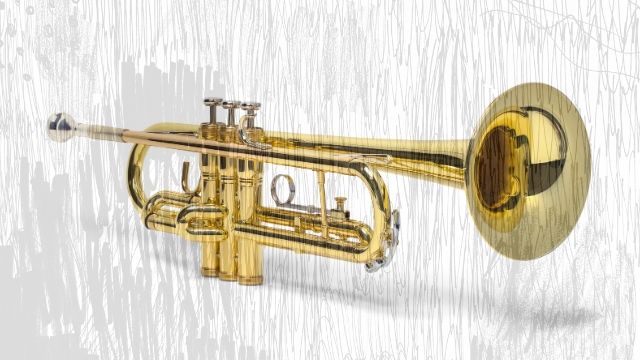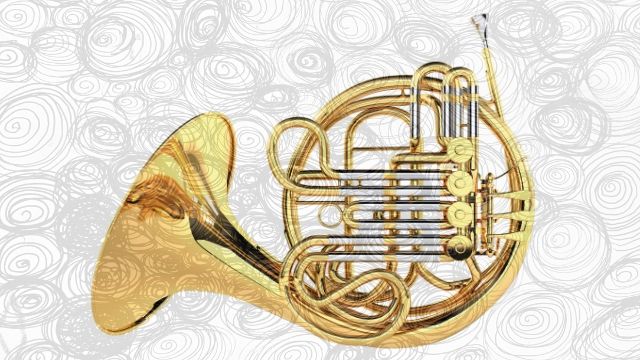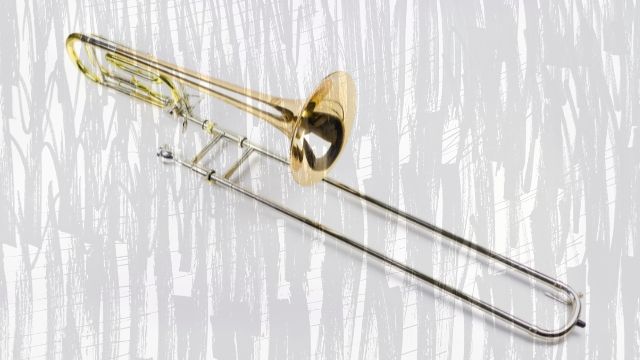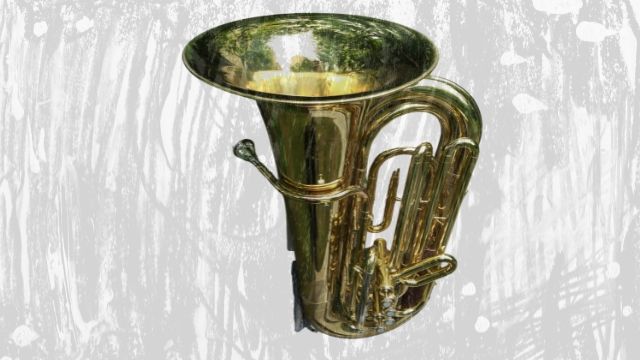From the triumphant fanfares of trumpets to the soulful melodies of French horns and the powerful foundation of tubas, the brass family have captured our hearts and ears with their resounding brilliance. It is one of the five instrument families within the orchestra.
The Percussion Family
The String Family
The Keyboard Family
The Woodwind Family
In this article, we delve into the enchanting world of brass instruments, uncovering their rich history, unique characteristics, and remarkable versatility.
Where Did Brass Instruments Originate From?
Brass instruments have a long history that spans different cultures and regions. The earliest ancestors of brass instruments can be traced back to ancient civilizations such as Egypt, Mesopotamia, and Greece. However, the development of brass instruments as we know them today primarily occurred in Europe.
The origins of modern brass instruments can be traced to medieval and Renaissance Europe, where early prototypes and predecessors of brass instruments were developed. The evolution of brass instruments during this time was influenced by various factors, including advancements in metalworking techniques and the desire to create instruments with a greater range and versatility.
Significant developments in brass instrument design occurred during the 19th century. Brass instrument makers experimented with different shapes, valve mechanisms, and materials to improve the instruments' playability and sound quality. This led to the creation of iconic brass instruments such as the trumpet, trombone, French horn, and tuba.
While the specific origins of each individual brass instrument vary, the overall development and refinement of brass instruments occurred over centuries and across multiple cultures. Today, brass instruments are an integral part of music traditions worldwide and are played in various musical genres, including classical, jazz, brass band, and popular music.
What Are Brass Instruments Made From?
Brass instruments are typically made from brass, a metal alloy primarily composed of copper and zinc. The exact composition of the brass alloy can vary depending on the specific instrument and the desired characteristics of its sound.
Brass instruments may also have other components made from different materials. For example, valves and valve casings are often made from brass or nickel silver (an alloy of copper, nickel, and zinc). The mouthpiece, which the player blows into, is typically made from brass, silver, or gold-plated brass.
Overall, the use of brass as the primary material for these instruments contributes to their characteristic sound and makes them distinct within the larger family of musical instruments.
What Is In The Brass Family?
There are many different brass instruments within the brass family but there are 4 well-known instruments; trumpet, french horn, trombone, and tuba.
Trumpet

The trumpet is a brass musical instrument known for its bright and powerful sound and is recognized for its cylindrical shape and flared bell at the end.
The trumpet is played by buzzing the lips into a small, cup-shaped mouthpiece, which creates vibrations that resonate through the instrument and produce sound. The player uses a combination of valves and lip tension to produce different pitches.
The trumpet typically has three piston valves, although some variations may have additional valves or features. By pressing these valves individually or in various combinations, the player can alter the length of the tubing and, consequently, change the pitch of the instrument.
The trumpet's sound is characterized by its clarity, brilliance, and ability to cut through other instruments. It is a versatile instrument that is widely used in a range of musical genres, including classical, jazz, Latin, and pop music.
Trumpet players can play while sitting or standing and support the instrument's weight with their left hand while manipulating the valves with their right hand.
French Horn

The French horn, often simply referred to as the horn, is a brass musical instrument renowned for its warm and expressive sound and is recognized for its distinctive coiled shape and large bell.
The French horn is played by buzzing the lips into a small mouthpiece and manipulating the pitch through a series of valves. Unlike other brass instruments, the French horn is known for its wide range of overtones and harmonics, which contribute to its unique tonal colour. The player's hand can be placed inside the bell to control the sound and create different effects.
The French horn is versatile and finds its place in various musical settings, including orchestras, wind ensembles, chamber groups, and even jazz and popular music. It often takes on melodic lines, lyrical solos, and harmonizing roles in an ensemble. The instrument requires a high level of skill and control due to its complex fingering and the need for precise embouchure control.
French horn players usually sit and hold the instrument across their lap, supporting its weight with their left hand and manipulating the valves with their right hand.
Trombone

The trombone is a brass musical instrument known for its distinctive slide mechanism and is characterized by its ability to produce a smooth glissando, or continuous pitch change, by extending or contracting the slide.
The trombone consists of a long, cylindrical tube with a flared bell at the end. It is played by buzzing the lips into a cup-shaped mouthpiece, which creates vibrations that resonate through the instrument and produce sound.
The player manipulates the slide, which is comprised of two parallel tubes, to change the length of the tubing and thus alter the pitch. By extending the slide, the player can lower the pitch, while contracting it raises the pitch. This unique feature allows for seamless and expressive transitions between notes.
The trombone has a versatile range and is commonly used in various musical genres, including classical, jazz, and marching band music. It can produce both mellow and powerful tones, making it suitable for both solo performances and ensemble playing. Trombonists often play while standing, supporting the instrument's weight with their arms and shoulder.
Tuba

The Tuba is the lowest-pitched musical instrument in the Brass family. It is known for its deep, rich sound and is often considered the backbone of the brass section in orchestras, concert bands, and marching bands.
The tuba consists of a wide conical tube that gradually expands into a bell shape at the end. It is played by blowing air into a cup-shaped mouthpiece, which creates vibrations that resonate through the instrument, producing sound.
The player produces different pitches by pressing valves or manipulating slides to change the length of the tubing, effectively altering the instrument's overall length. The tuba is versatile and can perform a wide range of musical styles, from powerful bass lines to melodic solos. Due to its size and weight, it is usually played while standing or sitting and is supported by a strap or a harness.
How Do Brass Instruments Work?
Brass instruments produce sound through a combination of buzzing the lips and manipulating the instrument's tubing. Here's a general overview of how brass instruments work:
- Buzzing the lips: The player places their lips into the mouthpiece of the instrument and creates a buzzing sound by blowing air through slightly pursed lips. This buzzing creates vibrations.
- Resonance and amplification: The buzzing vibrations are transmitted into the instrument's tubing, which acts as a resonator. The shape and length of the tubing determine the instrument's pitch and timbre.
- Valves or slides: Brass instruments have mechanisms to change the length of the tubing, thereby altering the pitch. Valves, commonly found in trumpets, cornets, and euphoniums, divert the airflow through additional sections of tubing. Slides, found in trombones and some types of trumpets, allow the player to extend or contract the length of the tubing manually.
- Changing pitch: By pressing different valve combinations or adjusting the slide positions, the player changes the effective length of the tubing. This, in turn, changes the pitch produced by the instrument. The shorter the length of the tubing, the higher the pitch.
- Controlling sound and dynamics: The player's embouchure (the position and control of the lips) affects the sound's quality and volume. Changes in lip tension, airspeed, and tongue placement allow for variations in dynamics, articulation, and expression.
- Bell and sound projection: The vibrations produced in the tubing travel through the instrument and exit through the flared bell. The shape of the bell helps to amplify and project the sound outward, creating the characteristic resonance and projection associated with brass instruments.
By combining these elements, players can produce a wide range of pitches, dynamics, and expressive effects, allowing for versatile and expressive musical performances on brass instruments.
Brass Family Ranges - The Highest to Lowest Pitch
The pitch range of instruments within the brass family can vary based on the specific instrument and the skill level of the player. In all cases, skilled players can often play even higher notes. Here's a general overview of the pitch ranges for some common brass instruments:
- Trumpet: The trumpet is a high-pitched instrument with a typical range extending from the written F# below the staff to about three octaves above the staff.
- French Horn: The French horn has a rich and versatile range. Its written range spans from the F# or G below the staff to around three octaves above the staff.
- Trombone: The trombone has a relatively wide range compared to other brass instruments. The tenor trombone, the most common variant, has a written range from the E or F below the bass clef staff to about two octaves above the staff.
- Tuba: The tuba, being the lowest-pitched instrument in the brass family, has a deep and powerful range. The standard tuba's range typically extends from the F or E below the bass clef staff to around two octaves above the staff.
It's important to note that these ranges can vary depending on factors such as the type of instrument (e.g., Bb, C, F tuba) and the individual player's skill and technique. Additionally, extended techniques like pedal tones and multiphonics can further expand the range of some brass instruments.
Brass Family Articulations
Brass players use various articulations to shape and articulate their musical phrases. Here is a brief list of common articulations used by brass players:
- Legato: Smooth and connected notes, with minimal breaks or separation between them.
- Staccato: Short, detached notes, typically played with a quick release of air and tongue.
- Marcato: Strongly accented and emphasized notes, often played with a slight separation between them.
- Tenuto: Holding the note for its full value, emphasizing its duration without adding additional accents.
- Sforzando: A sudden and strong accent on a single note or chord, often played with increased intensity.
- Slur: Transitioning between two or more notes without re-articulating, creating a seamless and smooth connection.
- Glissando: Sliding between pitches, often achieved by smoothly extending or contracting the slide or using valve combinations to change the pitch gradually.
- Flutter Tonguing: Rapidly rolling the tongue to create a fast and fluttering effect on the sound.
- Mute: Inserting a mute into the instrument's bell to alter the sound and add unique timbral qualities, such as a muted or wah-wah effect.
- Lip Trill: Quickly alternating between two adjacent notes by rapidly changing the lip tension and airflow.
- Rhythmical Articulations: Brass players use various rhythmic articulations such as accents, syncopation, stabs, and rhythmic patterns to add rhythmic interest and dynamics to their playing.
These are just a few examples of the articulations that brass players employ to add expressiveness, character, and nuance to their performances. Brass players can combine these articulations to create a wide range of musical effects and interpretations.






